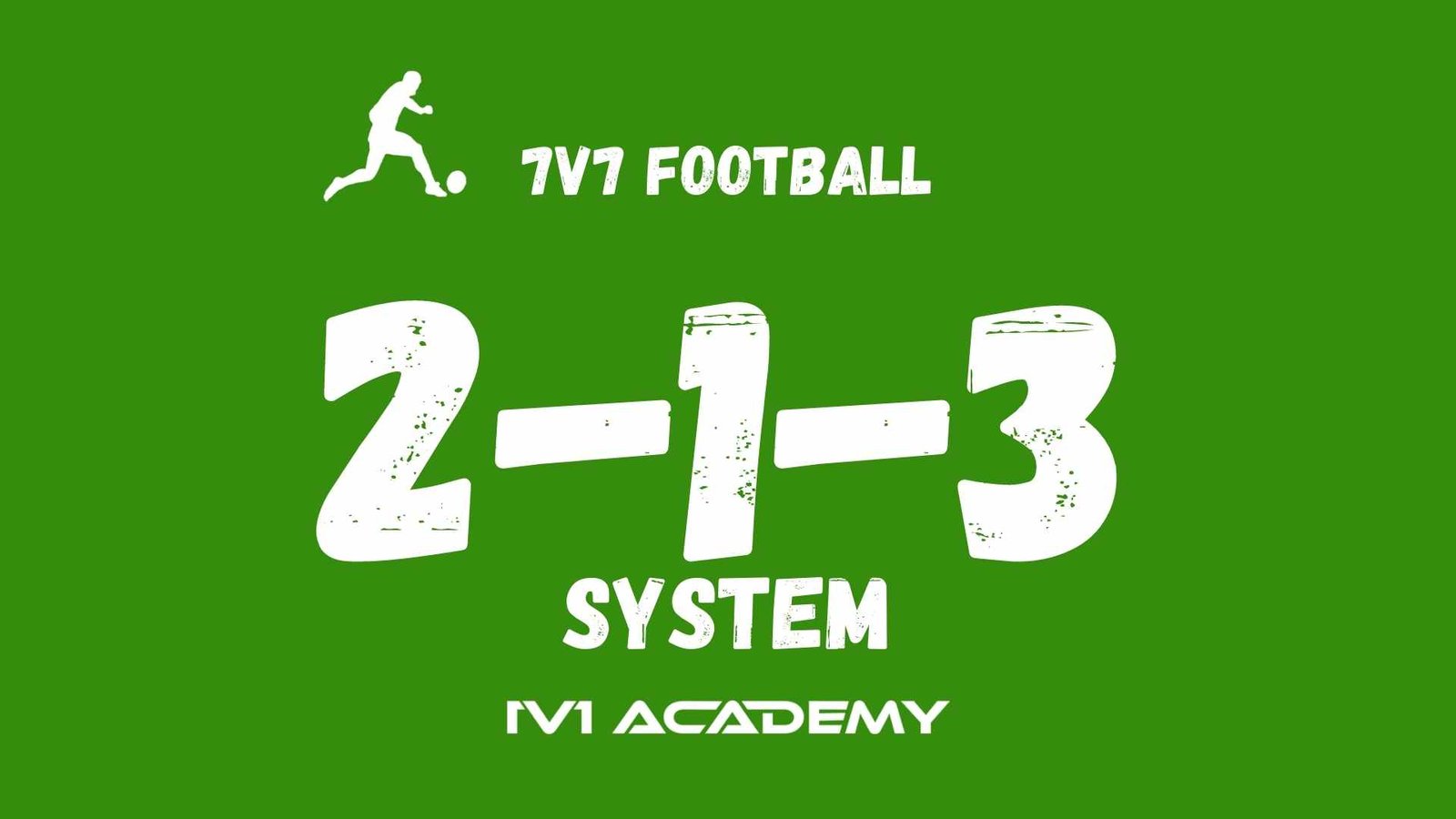
Play to listen to the article.
By Rudy Glez
1v1Academy. An Online Soccer Academy
Are you a soccer coach looking for an effective formation to help your team dominate the field? Look no further than the 2-1-3 soccer formation. This formation is easy to implement and can be adapted to fit your team’s strengths and weaknesses.
What is the 2-1-3 soccer formation?
The 2-1-3 soccer formation is a popular formation used by many youth soccer teams. It consists of two defenders, one central midfielder, and three forwards.
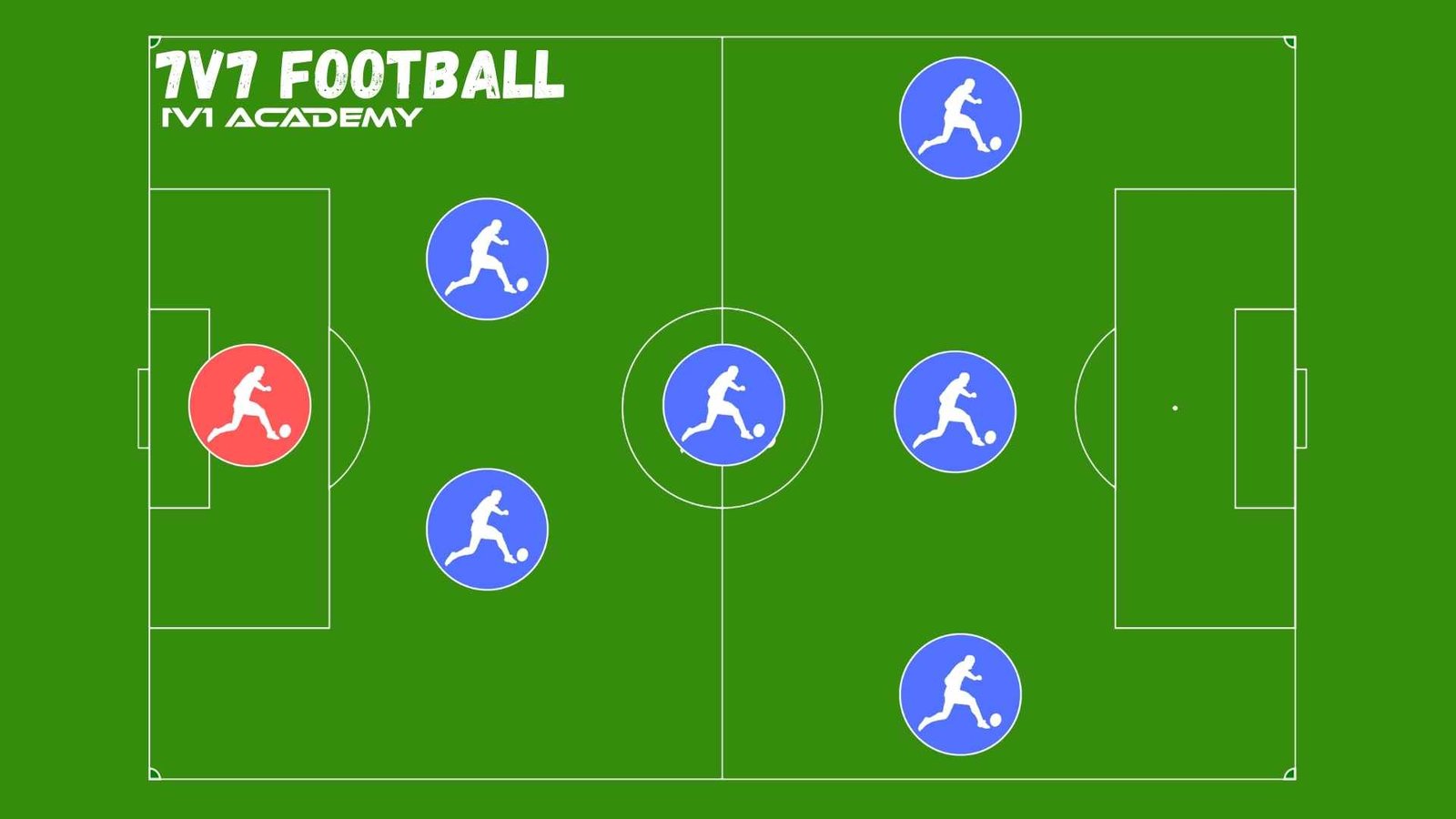
How does the 2-1-3 soccer formation work?
The two defenders play a critical role in maintaining a strong defense, while the central midfielder controls the midfield and helps distribute the ball to the forwards. The three forwards are responsible for creating scoring opportunities and pressuring the opposition’s defense.
How can I implement the 2-1-3 soccer formation with my team?
To implement the 2-1-3 soccer formation with your team, you should start by ensuring that your players understand their specific roles and responsibilities. Your defenders should focus on keeping the ball away from the goal and preventing the opposition from scoring. Your central midfielder should control the midfield, helping to move the ball up the football field and create scoring opportunities. Your forwards should be fast, agile, and focused on scoring goals.
What strategies should I use with the 2-1-3 soccer formation?
When using the 2-1-3 soccer formation, it’s important to encourage your players to communicate and work together as a team. You may also want to focus on possession play, helping your team maintain control of the ball for longer periods of time. Additionally, you may want to use a pressing strategy, putting pressure on the opposition’s defense and midfield to force turnovers and create scoring opportunities.
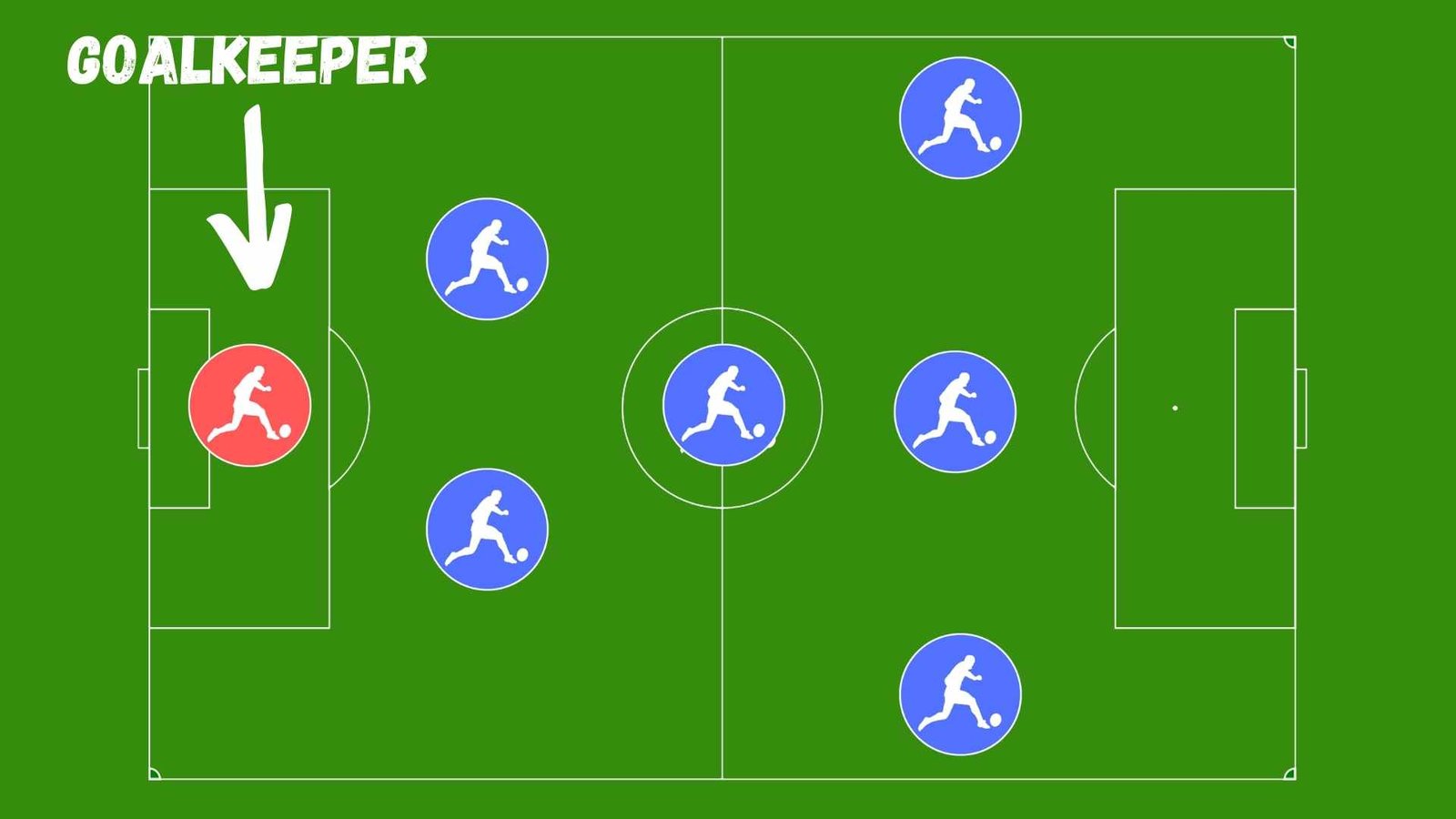
How can I adjust the 2-1-3 soccer formation to fit my team’s strengths and weaknesses?
One of the great things about the 2-1-3 soccer formation is that it can be easily adjusted to fit your team’s strengths and weaknesses. For example, if your team is having problems with the defensive line, you may want to add an additional defender and play with a 3-1-2 formation. Additionally, if your team is struggling to create scoring opportunities, you may want to add two midfielders and switch to a 2-3-1 system to regain the control of the ball.
Overall, the 2-1-3 soccer formation is an effective and versatile formation that can help your youth soccer team succeed on the field. By focusing on clear communication, teamwork, and adaptability, you can help your team dominate the competition and achieve their goals.
When to Use the 2-1-3 Soccer Formation Against Other 7v7 Formations
- Against 2-2-2: When facing a balanced 2-2-2 formation, the 2-1-3’s midfield mastery comes into play. The lone midfielder disrupts the equilibrium, outclassing the opponent’s midfield duo and paving the way for your attacking trio.
- Against 1-3-2: When confronted with a formation boasting a strong midfield presence like the 1-3-2, the 2-1-3 maintains its dominance. The two defenders act as a defensive shield, while the midfield orchestrator battles the lone midfielder, tipping the balance in your favor.
- Against 3-1-2: When your opponents adopt an aggressive 3-1-2 formation, the 2-1-3’s defensive solidity shines. The two defenders create a robust backline, thwarting attacks, and allowing your forwards to exploit the spaces left by the opponent’s aggressive setup.
- In Closing Moments: When every second counts, and victory hangs in the balance, the 2-1-3 becomes your winning card. Tighten the defense, let the midfielder dictate the game, and watch your forward trio sprint towards glory.
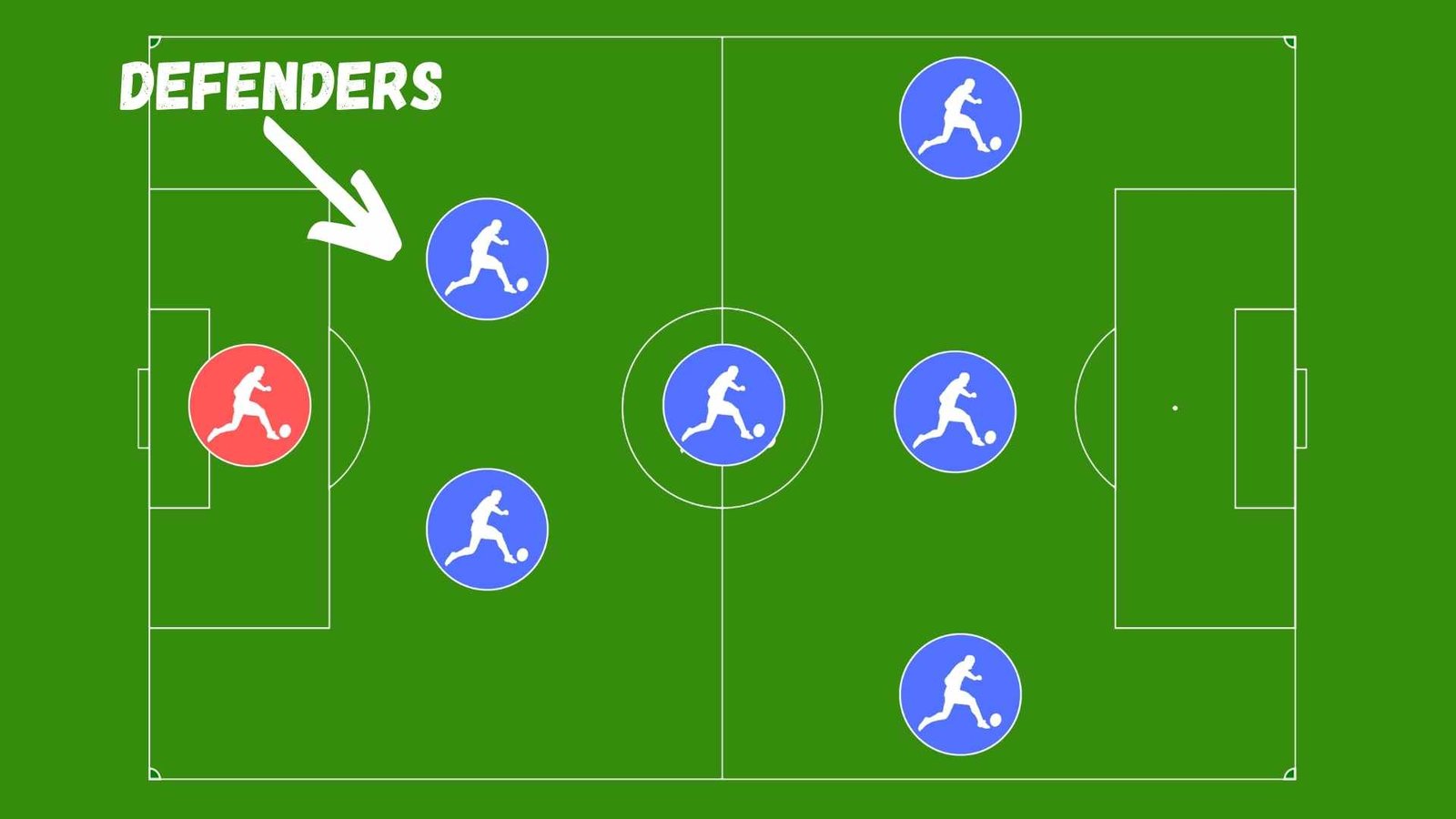
Mastering Moments: When to Unleash the 2-1-3 Soccer Formation for Victory
Choosing the right formation is akin to playing a strategic card. Enter the 2-1-3 soccer formation, a symphony of strength that can turn the tides of a match. We’ll delve into the art of timing, exploring the precise moments when implementing the 2-1-3 formation can elevate your team to glory.
Moment 1: The Need for a Goal Surge
Picture this: the clock is ticking, and your team is trailing by a goal. This is the perfect moment to unleash the 2-1-3. The trio of forwards, fueled by the lone midfielder’s strategic plays, transforms the formation into a goal-scoring powerhouse. It’s the surge you need to turn the tables and emerge victorious.
Moment 2: Breaking Through a Sturdy Defense
When faced with a stubborn defense that seems impervious to traditional tactics, it’s time to implement the 2-1-3. The two defenders create a robust foundation, while the midfielder strategically disrupts the opponent’s equilibrium. The result? Openings in the defense that your attacking trio can exploit with finesse.
Moment 3: Seizing Control of the Midfield Battle
The midfield is the heartbeat of soccer, and the 2-1-3 formation excels in midfield mastery. When faced with an opponent boasting a strong midfield presence, deploying the 2-1-3 tips the balance in your favor. The lone midfielder becomes the maestro, dictating the game’s pace and outclassing the rival midfielders.
Moment 4: Exploiting Defensive Aggression
In the face of an aggressively aligned opponent with a 3-1-2 formation, the 2-1-3’s defensive solidity comes to the forefront. The two defenders act as a reliable shield, thwarting attacks and creating opportunities for your attacking trio to exploit the spaces left behind by the opponent’s aggressive setup.
Moment 5: The Closing Minutes – A Tactical Ace
When the match hangs in the balance, and every second counts, the 2-1-3 emerges as your winning card. Tighten the defense, let the midfielder dictate the game’s tempo, and watch your forwards sprint towards glory. It’s a tactical ace that can snatch victory from the jaws of a draw.
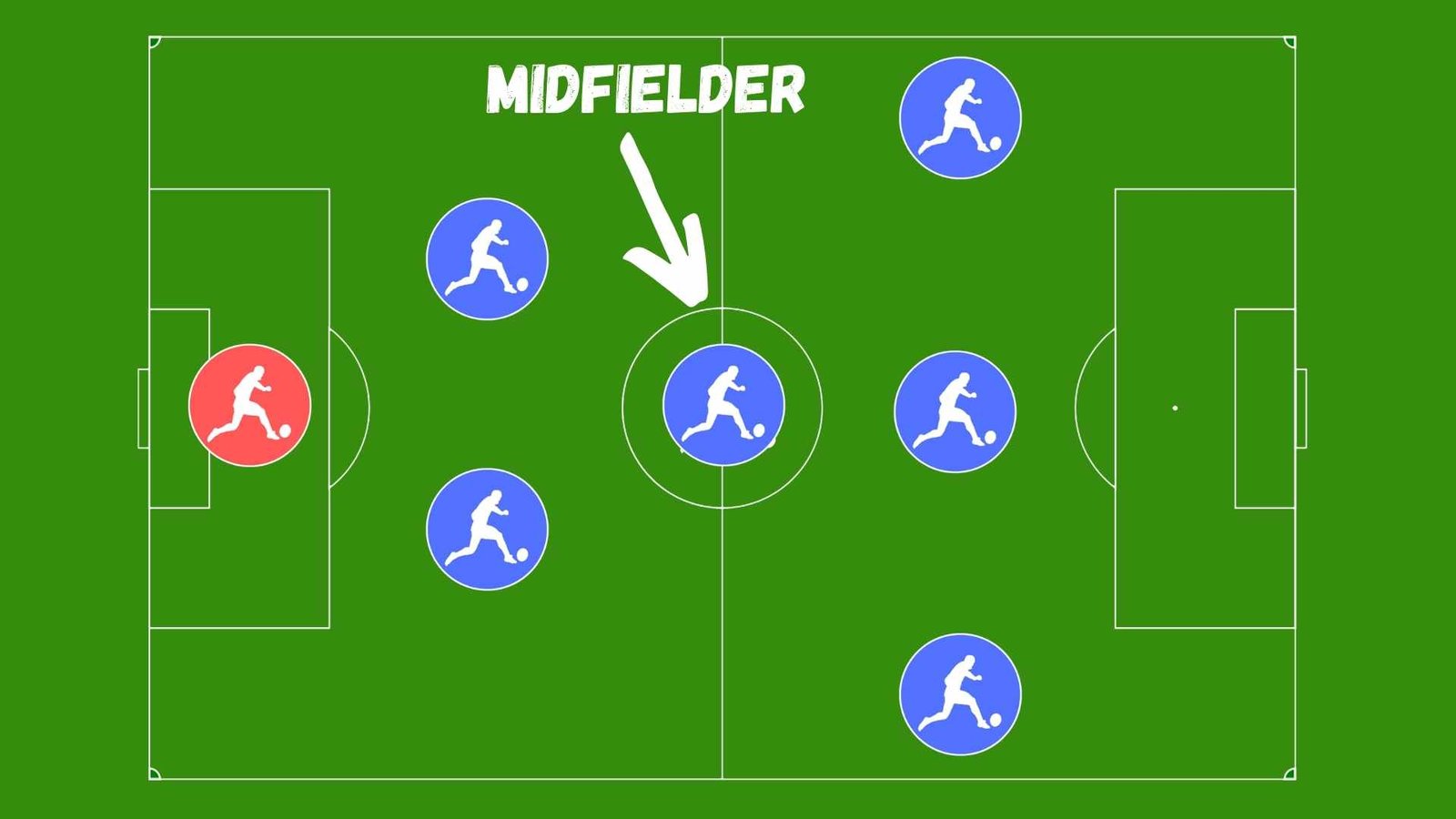
Strategic Wisdom: Knowing When to Sideline the 2-1-3 Soccer Formation
The 2-1-3 appears as a dynamic force. However, as in any strategic playbook, there are moments when wisdom lies not in its application but in its restraint. Let’s talk about different scenarios when avoiding the 2-1-3 formation becomes a rational choice, ensuring your team’s success in the game.
Moment 1: Facing a Midfield Onslaught
While the 2-1-3 excels in midfield control, there are instances when it’s wiser to avoid its allure. When confronting a rival team boasting an overwhelming midfield presence, opting for a formation with additional midfield support becomes crucial. The 2-1-3 might find itself outnumbered and outpaced in such scenarios, risking possession loss and compromising defensive stability.
Moment 2: Defensive Instability
Every formation carries its strengths and vulnerabilities, and the 2-1-3 is no exception. In times when your team faces a defensive crisis, be it due to injuries, lack of cohesion, or a formidable attacking opponent, choosing the 2-1-3 might expose vulnerabilities. A more defensive-minded formation can provide a solid foundation, minimizing risks and ensuring a resilient backline.
Moment 3: Protecting a Lead
The 2-1-3 is inherently an attacking formation, optimized for goal surges. However, when your team finds itself comfortably leading, the offensive nature of the 2-1-3 can be a double-edged sword. Switching to a more defensive formation safeguards your lead, preventing unnecessary risks that may arise from an open playstyle, especially in the closing minutes of a match.
Moment 4: Struggling with Positional Discipline
For the 2-1-3 to shine, every player must adhere to precise positional discipline. If your team is still mastering this aspect of gameplay, deploying the 2-1-3 might result in confusion on the field. Opting for a formation with more defined roles ensures that each player understands their position, reducing the risk of miscommunication and lapses.
Moment 5: Physical Dominance of Opponents
Against physically imposing teams, the 2-1-3 may struggle to hold its ground. The three forwards may find themselves outmuscled, and the defensive duo might face challenges in repelling robust attacks. Choosing a formation with a more robust defensive structure becomes imperative when up against opponents relying on physical dominance.
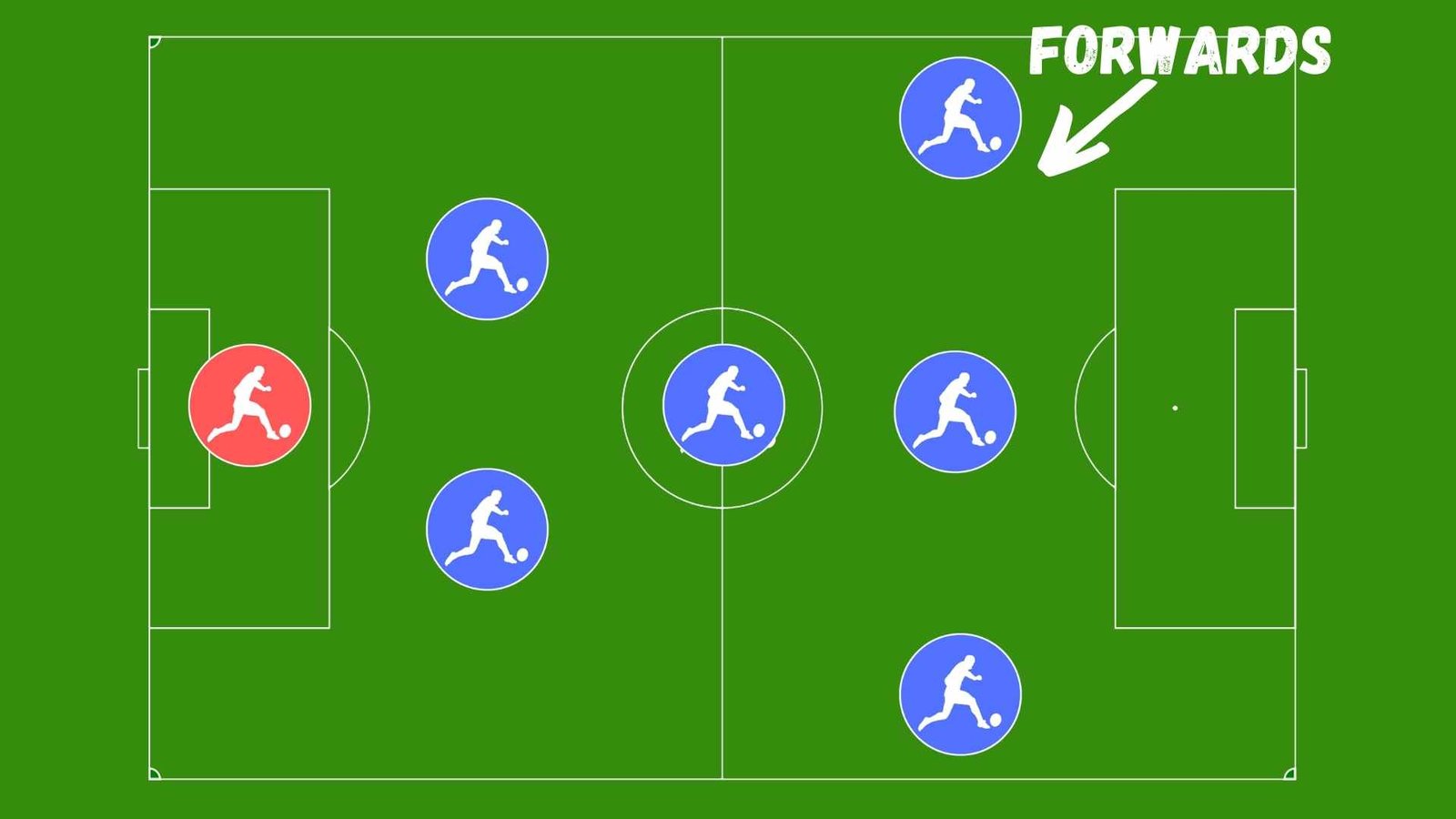
If you’re looking for a dynamic and versatile formation that can create scoring opportunities and control the midfield, the 2-1-3 formation might be perfect for your team. At 1v1 Academy, we have the resources you need to master this formation and take your game to the next level. Our learning materials are designed by experienced coaches and players who understand the intricacies of the 2-1-3 and can help you unlock its full potential.
By following 1v1 Academy on social media, you can stay up-to-date with the latest tips, tricks, and strategies for mastering the 2-1-3 formation. Our community is dedicated to helping each other improve and achieve their goals on the field.
Don’t miss out on this chance to expand your knowledge and become a more well-rounded player or coach.
1v1Academy. An Online Soccer Academy
